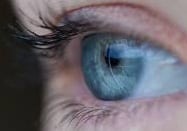The etymology of eyelid takes us to Vulgar Latin palpĕtrum . This is a word that, in turn, derives from "palpetra" and was formed with the verb "palpare", which can be translated as "palp" or "palpitate", and the suffix "-brum", which is synonymous with " carry".
The concept refers to the retractable fold of skin that provides protection to the eyeball.
 Each eye is protected by two eyelids: the lower eyelid and the upper eyelid . These are membranes that can make downward and upward movements to prevent the entry of particles, avoid excess light and distribute tears, for example.
Each eye is protected by two eyelids: the lower eyelid and the upper eyelid . These are membranes that can make downward and upward movements to prevent the entry of particles, avoid excess light and distribute tears, for example.
The eyelids are made up of various layers . The mucous layer is followed by the tarsal layer , the muscular layer and the cutaneous layer successively, with the cutaneous layer being the outermost layer. As for the muscles, some are dedicated to opening the eyelids (separating them), while others close them (bringing them together).
There are various disorders and diseases that can affect the eyelid. An allergy or infection , to name two possibilities, can cause redness and inflammation ( blepharitis ) of the eyelids. A bacteria , meanwhile, can also infect the gland found on the edge of the eyelid and generate a stye .
However, it must be taken into account that there are other diseases that can also affect the eyelids to a greater or lesser extent. Examples of that are the following:
-Sties, which is a small inflammation or bump that is very painful and has a red appearance. These are usually caused by a bacterial infection.
-Shingles, which is a red and painful rash in which blisters appear that can break, giving shape to what are scabs. A herpes zoster type virus is what causes them.
-Trachoma, which is a type of eye infection that damages both eyelids and can lead to infectious blindness .
Blepharospasm , on the other hand, is the repetitive and uncontrollable movements of the eyelid muscles. These spasms can be caused by stress , fatigue, or excessive alcohol or coffee consumption.
Another problem that usually occurs is eyelid drooping . This situation is generally caused by muscle weakness or damage to the nerves that are responsible for controlling the muscles in the area, issues that in turn can have multiple reasons (an injury , a congenital problem, etc.). In some cases, eyelid drooping is reversed with surgical intervention.
However, there are other occasions in which drooping of the eyelids can also be caused by diabetes, a stroke, a tumor, Horner's syndrome or myasthenia gravis.
Sometimes, simply the passage of time, age, is what can lead a person to have drooping eyelids. Yes, because it is caused by the simple sagging of the skin. In that case, she may choose to take certain measures against this situation, such as facial yoga, cosmetic treatments, creams to thicken the skin or even an operation.
